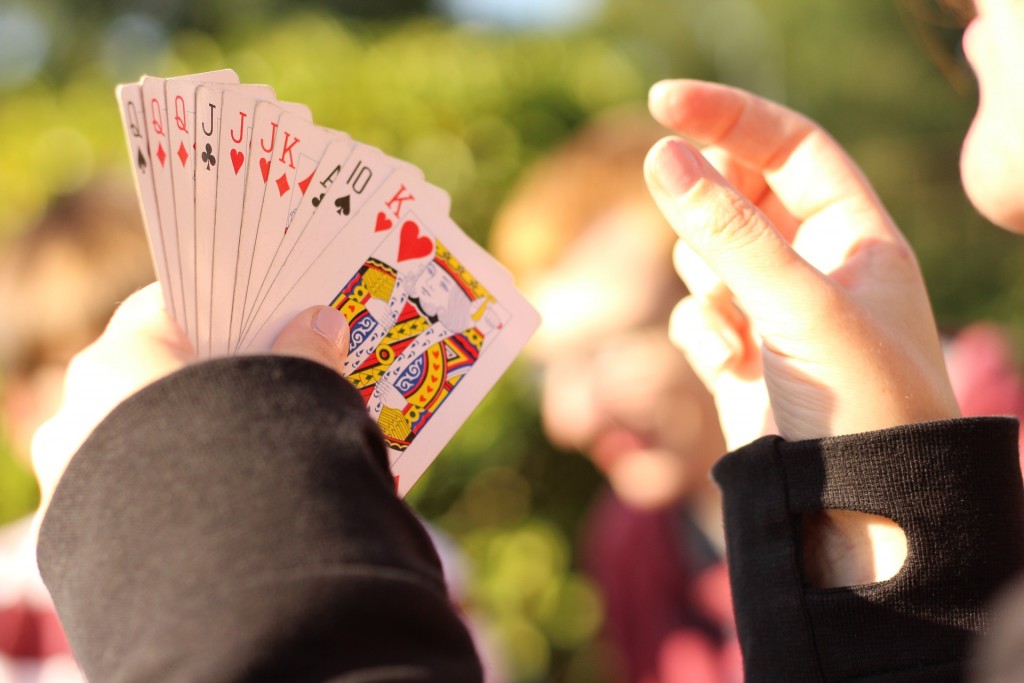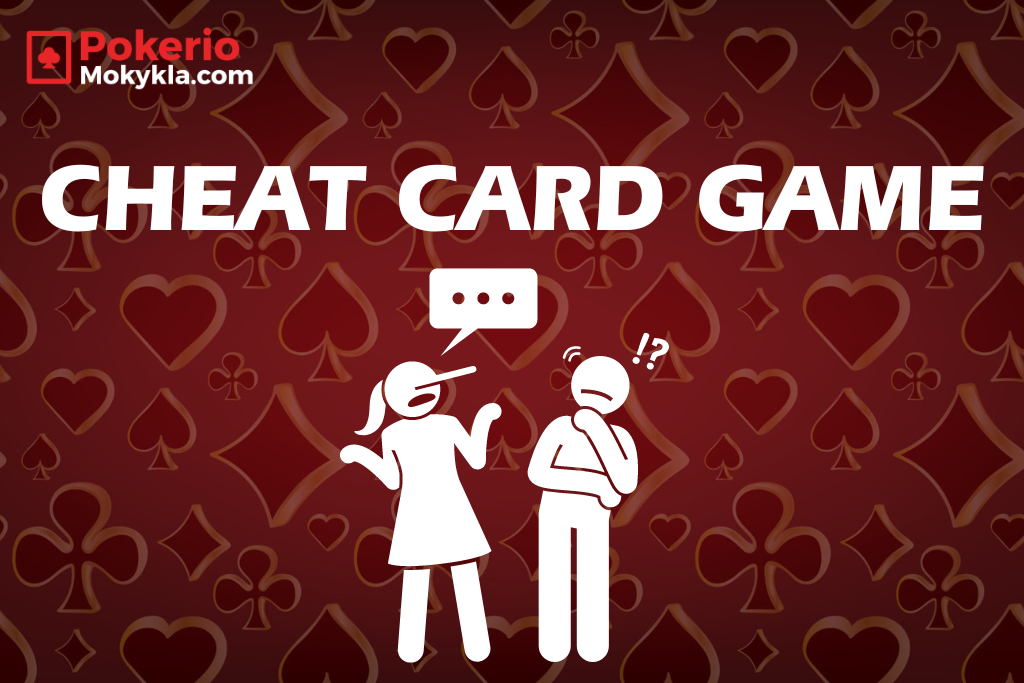Best online casinos for games:
How many players play?
“Cheat” can be played by 2 or more players.
Cheat card game rules. How to play?
Materials needed for the game Cheat
Typically, the card game Cheat is played with a deck of 36 or 52 cards, but there are no defined “rules” on how many cards should be used – this is decided by the playing group. The number of cards also depends on the number of players and the chosen variant of the “Cheat” game.
First, the cards for the game Cheat are thoroughly shuffled and dealt equally to all participants. For example, if 4 players are playing with a 52-card deck, the dealer gives each player 13 cards.
1st game variant
The first player places 3 face-down cards on the table and announces a certain card rank, for example, three queens or three nines, etc.
It is important that only one rank of cards can be announced (“lied about”). Then, the player sitting to his left must say whether they believe the opponent or not. After the player says believe/don't believe, the 3 cards placed on the table are revealed.
Game outcomes.
If the opponent did not believe and was right, the player who placed the cards must take all the cards back.
If the opponent did not believe and was wrong, they must take the 3 placed cards.
The game continues in a circle.
2nd game variant
The first player selects one card from their deck and places it face-down on the table, announcing its rank.
This could be, for example, the nine of hearts, a queen, or any other hearts card. The second player also places a card on top, but it should also be a hearts card.
The second player can “lie” and place a completely different card but say “Hearts.” The first player can check if the second player lied and reveal the card.
Game outcomes.
If the second player lied, they are “exposed” and must take all the cards placed on the table. Any player can check the cards.
If you check the card your opponent placed and it is exactly what they said, you must take all the cards.
3rd game variant
The cards are dealt to the players, and the last card is revealed on the table. It indicates the rank from which the game will start. For example, if any spades card is revealed, all players in turn place a face-down card in one pile and say: “Spades.” If any player does not believe that the placed card is indeed spades, they say: “You're lying,” and reveal that player's card.
Game outcomes.
If it was indeed spades, the player who did not believe must take the entire pile of cards on the table.
If it was a lie, the player who lied takes all the cards.
The player who was right places a new card.
4th game variant “Latvian Cheat”
Latvian Cheat, unlike Lithuanian, is a bit more complicated, harder, and longer. The number of players is again unlimited, and it can be played with as many cards as desired. However, experienced “Cheat” players recommend playing from sixes or sevens.
The game starts with an equal number of cards dealt to the players. Let's say 3 players are playing, let's call them A cheat, B cheat, C cheat.
Player A places any chosen number of cards in the middle and says, for example, “3 queens.” Then player B says whether they believe or not and continues the game.
This is where the fun of the game begins.
*If player B says they believe and upon checking the placed cards indeed finds 3 queens, all the placed cards are set aside, and it is now their turn to place a chosen number of desired cards on the table.
*If player B says they believe and upon checking the placed cards finds them to be different, those cards go to them, and player C places the next cards.
*If player B says they don't believe and upon checking the placed cards indeed finds 3 queens, again all the cards go to them, and the turn is passed to player C.
*If player B says they don't believe and upon checking the placed cards finds them to be different, the cards are taken by player A who placed them, and player B places the next cards.
If it is decided to continue playing, player B can change the number of cards but cannot change the rank, so in this case, they place a certain number of their cards on the face-down cards and again say “N queens.”
Guesses go to player C, but they only check player B's cards. If the game continues, player A checks player C's cards, and so on.

The game continues until there is one player left, who is declared the biggest “cheater” of the game. In this case, a twist appears.
If, let's say, player A places their last card, and the next player B says they don't believe it and checks the cards, finding out that player A was indeed lying, then the latter returns to the game and takes all the cards from the table.
Simplest Game Example
Player A: 3 Queens
Player B: 2 Queens
Player C: 2 Queens
Player A: 1 Queen (actually places a King)
Player B: I believe (checks the last card, and it's not a Queen but a King, so B takes all the cards from the middle)
Player C: 1 Ace
Player A: I believe (checks the last card, it is as said, so the cards from the middle are set aside in a separate pile).
Player A: 1 King
Player B: 2 Kings (actually places an Ace and a Queen)
Player C: I don't believe (checks the last 2 cards, and they are not as said, so player B takes all the cards from the middle)
Player C: 2 Eights
Player A: 3 Eights (actually places 3 Eights)
Player B: I don't believe (checks the last 3 cards and they are as said, so B takes all the cards from the middle)
Player C: 1 Eight
And so on…
History of the Card Game Cheat
The card game “Cheat”, known by many other names such as “I Doubt It”, “Bluff”, and “Bullshit”, originates from a larger group of games where players try to deceive each other.
The exact beginning of the game is not very clear, but people believe it started in the 19th century when playing cards became a common way for people to have fun together.
The main idea of bluffing probably came from old cheating games where lying and clever tricks were already important parts. Gradually, these ideas evolved into a game centered solely on bluffing.
The game became popular in many countries, adapting to different cultures and tastes. In the United Kingdom, people still call it “Cheat”, while in the United States it has two names: “I Doubt It” or “Bullshit”. In China and India, similar bluffing games emerged, integrating local card game traditions.
Although “Cheat” has simple rules, it remains popular due to its deep psychological aspects and the fun of deceiving others. People enjoy trying to outsmart their friends, making this game exciting for everyone.
Who Won?
In all cases of the game, the “smallest” liar is the one who first manages to get rid of all their cards the fastest.






